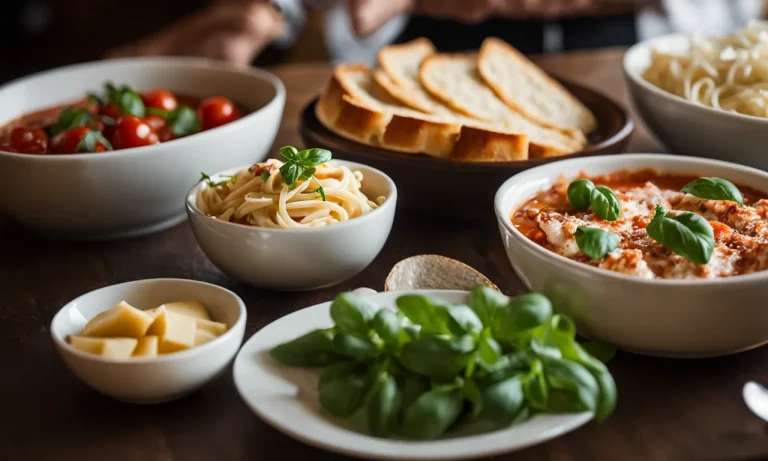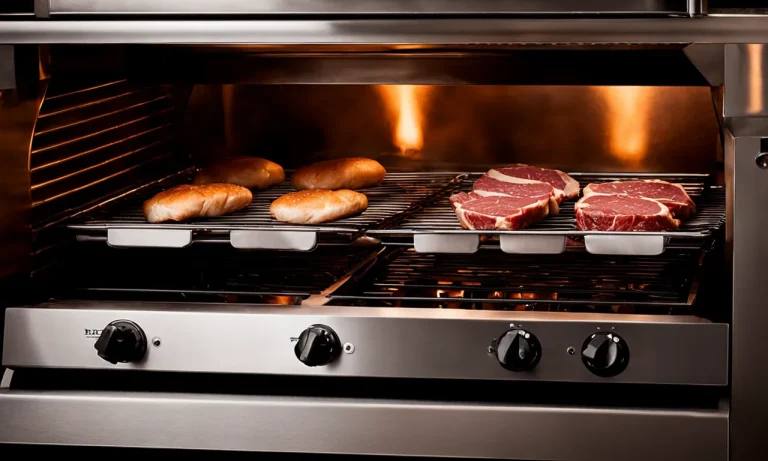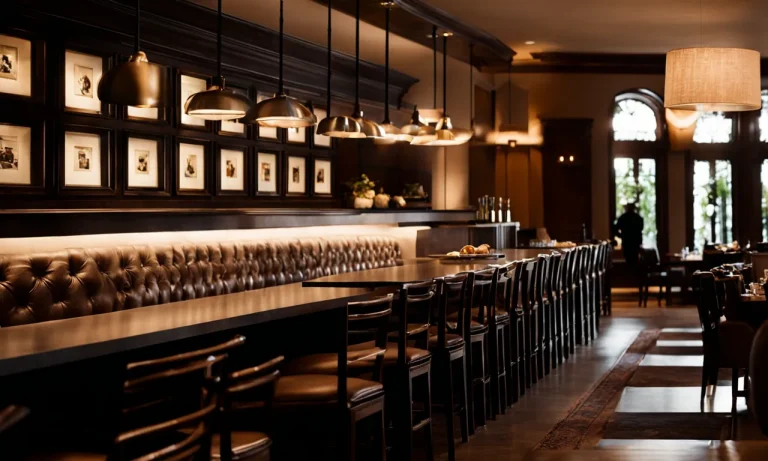Restaurants are a key part of many local economies and provide jobs for millions of people across the country. However, the restaurant industry is known for having remarkably thin profit margins, often between just 3-5%.
If you’re wondering why it’s so hard for restaurants to turn a good profit, read on for a deep dive into the factors at play.
If you’re short on time, here’s a quick answer: High fixed costs like rent and labor coupled with intense competition and razor-thin per-meal margins make it very difficult for most restaurants to earn strong profits.
In this comprehensive guide, we’ll explore the major expenses restaurants face, the impacts of rising costs for food and wages, how technology and delivery services are affecting margins, and strategies restaurants can use to try to improve profitability.
The High Fixed Costs of Running a Restaurant
Running a restaurant is no easy task, and one of the biggest challenges faced by restaurant owners is the low profit margins. There are several factors that contribute to this, and one of the main reasons is the high fixed costs associated with running a restaurant.
Rent and Mortgages
One of the biggest fixed costs for restaurant owners is the rent or mortgage payment for the space they occupy. Prime locations in bustling areas can come with a hefty price tag, and this can significantly eat into the profit margins.
Restaurant owners often have to make difficult decisions when it comes to choosing a location that balances high foot traffic with reasonable rental prices.
Kitchen Equipment
Another major fixed cost for restaurants is the purchase and maintenance of kitchen equipment. From industrial-sized ovens to refrigerators and dishwashers, the cost of acquiring and maintaining these essential tools can be substantial.
Restaurant owners need to invest in high-quality equipment to ensure smooth operations, but this can often be a significant financial burden.
Insurance
Insurance is another necessary expense for restaurant owners. From property insurance to liability insurance, restaurants need to protect themselves against potential risks such as accidents, foodborne illnesses, and legal claims.
The cost of insurance can vary depending on the size of the restaurant and the coverage needed, but it is an unavoidable fixed cost that eats into profit margins.
Staffing
One of the most significant fixed costs for restaurants is staffing. Restaurants typically require a large workforce to handle various tasks, including cooking, serving, dishwashing, and management. Labor costs can be substantial, especially when considering wages, benefits, and payroll taxes.
Additionally, restaurants often have to deal with high turnover rates, leading to increased recruitment and training costs.
It is essential for restaurant owners to carefully manage these fixed costs to maintain a healthy profit margin. Finding ways to minimize expenses without compromising on quality is crucial. This can include negotiating favorable rental agreements, investing in energy-efficient kitchen equipment, shopping around for competitive insurance rates, and implementing efficient staffing and scheduling practices.
While the fixed costs associated with running a restaurant can be daunting, it’s important to remember that with careful planning and management, a restaurant can still thrive and be profitable. By understanding these costs and finding ways to optimize operations, restaurant owners can increase their chances of success in a competitive industry.
Tight Profit Margins Per Meal
One of the main reasons why restaurant profit margins are so low is due to tight profit margins per meal. This means that the amount of profit made from each meal served is relatively small compared to the costs involved in running a restaurant.
Food Costs
One major factor that contributes to low profit margins per meal is the high cost of ingredients and food supplies. Restaurants often have to invest a significant amount of money in purchasing high-quality ingredients to create delicious and enticing dishes for their customers.
Additionally, fluctuating food prices and seasonality can impact the cost of ingredients, making it challenging for restaurants to maintain consistent profit margins.
To mitigate the impact of food costs on profit margins, many restaurants carefully analyze their menu pricing and portion sizes. By strategically pricing their menu items and controlling portion sizes, restaurants can try to strike a balance between offering value to customers while still making a profit.
Labor Costs
Another significant factor affecting restaurant profit margins is the high cost of labor. Restaurants require a team of skilled and dedicated staff members to provide excellent service and prepare meals. However, labor costs can quickly add up, especially when considering wages, benefits, and taxes.
Restaurants often face the challenge of finding the right balance between maintaining a high level of service and managing labor costs. Some restaurants may choose to automate certain tasks or streamline their operations to reduce labor expenses.
However, it’s important for businesses to find a balance that doesn’t compromise the quality of the dining experience.
It’s worth noting that the tight profit margins per meal can vary depending on the type of restaurant and its location. Fast-food chains, for example, may have lower food costs but higher labor costs due to their high-volume business model.
On the other hand, fine dining establishments may have higher food costs but lower labor costs as they focus on providing a more personalized and intimate dining experience.
External Pressures on Restaurant Finances
Running a restaurant business is no easy task, and one of the biggest challenges that restaurant owners face is maintaining healthy profit margins. There are several external pressures that contribute to the low profit margins in the restaurant industry.
Increasing Competition
The restaurant industry is highly competitive, with new restaurants constantly popping up in every corner. This saturation of the market leads to intense competition among establishments, making it difficult for individual restaurants to stand out and attract customers.
As a result, restaurants often have to lower their prices or offer discounts, which eats into their profit margins.
According to a study conducted by National Restaurant Association, the number of restaurants in the United States has been steadily increasing over the years, reaching over 1 million in 2019. With such a high number of competitors, it’s no wonder that profit margins are being squeezed.
Rising Wages and Benefit Costs
Another significant factor contributing to the low profit margins in the restaurant industry is the rising costs of wages and employee benefits. In recent years, there has been a push for higher minimum wages in many states and cities, putting additional financial strain on restaurant owners.
In addition to wages, the cost of providing employee benefits such as health insurance and paid time off has also been on the rise. These expenses can take a significant chunk out of a restaurant’s budget, leaving less room for profit.
According to the Bureau of Labor Statistics, the average hourly wage for food service workers has been steadily increasing over the past decade. This upward trend in wages further adds to the financial pressure faced by restaurant owners.
New Technology and Delivery Services
The advent of new technology and the rise of delivery services have also had an impact on restaurant profit margins. While these advancements have made it easier for customers to order food, they have also increased the costs associated with running a restaurant.
Implementing and maintaining technology, such as online ordering systems and point-of-sale software, can be expensive for restaurants. Additionally, partnering with third-party delivery services often comes with high fees and commissions, further reducing profit margins.
A study by Uber Eats found that restaurants typically pay around 30% of the total order value in fees to delivery platforms. With such high costs, it becomes challenging for restaurants to make a significant profit from delivery orders.
Strategies for Improving Restaurant Profitability
Running a successful restaurant requires more than just great food and service. Profit margins in the restaurant industry are notoriously low, making it essential for restaurant owners and managers to find ways to improve profitability. Here are some strategies that can help:
Focus on Higher Margin Menu Items
One way to boost profitability is by focusing on menu items with higher profit margins. This means analyzing your menu and identifying which dishes or drinks generate the most revenue relative to their cost. By promoting and upselling these items, you can increase your overall profit margin.
Additionally, regularly reviewing and adjusting menu prices can also help maximize profitability.
Offer Takeout and Delivery
In today’s fast-paced world, many customers are looking for convenient dining options. By offering takeout and delivery services, you can tap into this demand and increase your revenue streams. Implementing an efficient online ordering system and partnering with third-party delivery services can help streamline the process and attract more customers.
Additionally, promoting special offers or discounts for takeout and delivery orders can further incentivize customers to choose these options.
Reduce Food Waste
Food waste is not only environmentally unsustainable but also impacts a restaurant’s bottom line. Implementing effective inventory management practices, such as regularly monitoring food spoilage and adjusting purchasing quantities accordingly, can help reduce waste and save costs.
Additionally, consider implementing creative ways to repurpose leftover ingredients or offer specials that utilize excess inventory to minimize waste and maximize profitability.
Negotiate Costs with Suppliers and Landlords
Building strong relationships with suppliers and landlords can provide opportunities for cost savings. Negotiating better pricing agreements with suppliers or exploring alternative suppliers can help reduce ingredient costs.
Similarly, renegotiating lease terms with landlords or exploring rent reduction options can free up funds that can be reinvested into the business or improve profitability.
Optimize Labor Schedules
Labor costs are a significant expense for restaurants. Optimizing labor schedules by closely monitoring customer traffic patterns and adjusting staffing levels accordingly can help prevent overstaffing during slow periods and understaffing during peak times.
Implementing efficient shift scheduling software or systems can help streamline the process and ensure adequate coverage while minimizing unnecessary labor costs.
Leverage Technology Efficiently
Technology can play a vital role in improving restaurant profitability. Implementing a robust point-of-sale (POS) system can help streamline operations, track sales data, and identify trends or areas for improvement.
Additionally, leveraging technology for marketing purposes, such as utilizing social media platforms or implementing loyalty programs, can help attract new customers and retain existing ones, ultimately boosting profitability.
By implementing these strategies and continually assessing and adjusting your restaurant’s operations, you can work towards improving profitability and achieving long-term success.
Conclusion
In conclusion, restaurants face an uphill battle when it comes to profitability. Costs are high across the board, from real estate and equipment to ingredients and staffing. Intense competition forces restaurants to keep prices and margins low, while rising wages and the growth of delivery services eat into profits even more.
Successful restaurants use strategies like analyzing their finances, optimizing operations, and boosting revenue through multiple channels. At the end of the day, hard work, smart management, and a bit of luck are key to making it in the famously difficult restaurant business.






